A big topic and conversation in our workforce is centered around the skills gap — some experts argue there is no such gap, but our work with businesses and students across the country tells us otherwise. We have no doubt that the skills gap is indeed preventing employers from finding the talent they need.
At least half of U.S. employers are experiencing difficulty filling crucial positions and 40 percent say a major reason is that candidates lack essential skills, particularly in skilled trades. Moreover, on average, Americans will hold between seven and ten jobs in their 30+ year professional life. Training is becoming essential to remaining relevant as we switch jobs every four years, and often with new required skills to be mastered. The new reality is that education is becoming a journey, not a destination, for most middle skilled workers.
We also know that Americans are working harder now than in any other point in our history, and we are hard pressed to find time to get the proper training and new skills that may be required to garner a new job. Taking a class, or finding time away from work to learn on your own, is not always easy or cost effective. Traditional educations are often not providing either the ROI as tuition costs can outweigh the wages associated with new skills. For example, college tuition at public two and four year colleges has grown on average over 6% each year over the past decade, far outpacing median family income and even the price of healthcare. The bad news is that the traditional system is broken; the good news is that the “consumerization” of higher education has been driven by greater expectations for value, viable alternative delivery models, and the need for sustained employability with the skills and learning environments needed for success.
Penn Foster, a Boston and Scranton, PA based learning institution, is just one of the distance learning schools that offers certificate programs that align with open jobs in the workforce today. We serve a diverse range of over 150,000 active students and with scale comes the reality that a one-size-fits-all education strategy is no longer realistic in today’s workforce and economy. In fact, most of these middle-skills jobs don’t require four-year degrees; the Georgetown Center on Education and Workforce estimates there will be 47 million job openings between 2008 and 2018, with nearly half only requiring an associate degree. Penn Foster now offers over 200 proven distance learning programs, and more than 50% of the programs align with the in-demand professions today. A key element of Penn Foster’s value proposition is lower price which completes the triad of quality, convenience and affordability often missing from traditional ground-based academics.
The skills issue is hitting us here in New England. In 2010, the Federal Reserve found that the population decline in New England could result in a shortage of skilled workers by 2018; they predicted that shortage to be over 750,000 workers. This shortage must be addressed with better technical education, offered to students in a way that fits into their lives. Depending on an individual’s learning style, online schools provide vast resources to students. Working with local employers can often provide the hands-on training needed to develop new skill sets for jobs like small engine mechanics, veterinary technicians, medical transcriptionists, metal cutting specialists, and more.
For example, let’s focus on the veterinary technician degree program. In 2011, the U.S. Department of Labor’s Bureau of Labor Statistics projected 52 percent growth of this job, and projects over 41,000 new job openings in this field between 2010 and 2020. The rapid employment growth means that the number of positions available will continue to outpace the number of new graduates … that is a skills gap. Only six distance learning programs in the world offer a veterinary technician program that has full AVMAaccreditation, and Penn Foster is one of them.
The way we educate needs to shift in order to better serve both the business community as well as consumers who are looking to learn skills quickly and cost effectively. Community colleges are looking to shift classes online as they undergo budgeting constraints in a largely fixed cost business model. Many distance learning institutions are starting to take notice and build class offerings around skills that are needed to fill jobs in automotive, computer engineering, medical coding and billing, and veterinary technology.
But the class offerings are just one piece. The reimagining of the learning environment has to match the way students are living their lives today at an affordable price. It’s no longer an option for middle-skilled America to drop what they are doing and go back to school. Interestingly new learner-driven education is often less costly than the large group teaching model of traditional higher education. To better deal with shortages of qualified applicants now and in the future, government policy makers need to also acknowledge that government job training programs could stand improvement. Employers should also focus on long-term strategies for growth that include investing in skills-training efforts to enable a broader pool of applicants.
As we all immerse ourselves into our 21st century digital lives, traditional educational institutions have the opportunity to leverage technology and partners in a way that affords more flexibility for today’s time-starved consumer. You can expect education institutions will continue to offer more flexibility to learn, whether it is offering classes in an open enrollment fashion or working with businesses to offer training on site. It’s the model Penn Foster has adopted as we move forward.
Written by Frank Britt for Boston.com, October 2012. Minding the Gap
